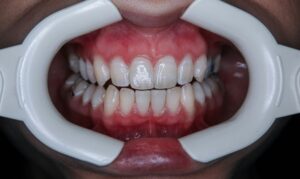Neonatal jaundice is a common condition that affects many newborns within the first few days of life. It occurs when a baby’s skin and the whites of their eyes take on a yellowish tint due to elevated levels of bilirubin in the blood. Jaundice can affect up to 60% of full-term infants and an even higher percentage of preterm babies. While it is often harmless and resolves on its own, in some cases, jaundice can indicate an underlying health issue that requires medical attention.
This article explores the causes of jaundice in newborns, why it happens in some babies more than others, the potential risks if left untreated, and how it is typically managed by healthcare providers.
1. What Is Jaundice?
Bilirubin and Its Role in Jaundice
Jaundice occurs when there is an excess of bilirubin in a newborn’s blood. Bilirubin is a yellow pigment that is produced when the body breaks down hemoglobin, the protein in red blood cells that carries oxygen. Normally, the liver processes bilirubin and helps remove it from the body through stool and urine. However, in newborns, the liver is often not fully mature, leading to a temporary buildup of bilirubin in the blood—a condition known as hyperbilirubinemia.
When too much bilirubin accumulates, it causes the skin and eyes to appear yellow, which is the characteristic sign of jaundice.
2. Causes of Neonatal Jaundice
Physiological Jaundice: The Most Common Type
Most cases of newborn jaundice are classified as physiological jaundice, which is considered normal and usually resolves on its own. This type of jaundice occurs because a newborn’s liver is still developing, making it less efficient at processing bilirubin. In the first few days after birth, red blood cells are broken down at a higher rate than in adults, leading to increased bilirubin production. Since the liver is not fully mature, it takes time for it to catch up and clear the excess bilirubin from the baby’s bloodstream.
Physiological jaundice typically appears 2 to 4 days after birth and usually disappears by the time the baby is 1 to 2 weeks old without causing any lasting issues.
Breastfeeding Jaundice
Breastfeeding jaundice is another common form of jaundice that can occur in breastfed babies during the first week of life. It is not caused by breast milk itself, but rather by insufficient intake of breast milk. In the early days of breastfeeding, some babies may have difficulty latching or feeding effectively, leading to inadequate milk intake. As a result, the baby becomes slightly dehydrated and has fewer bowel movements, which slows down the elimination of bilirubin from the body.
Once breastfeeding is well-established and the baby is feeding regularly, the jaundice usually resolves on its own. Healthcare providers often encourage frequent feeding to help the baby pass more bilirubin through stools.
Breast Milk Jaundice
Unlike breastfeeding jaundice, breast milk jaundice occurs later, usually after the first week of life, and can persist for several weeks. This type of jaundice is thought to be caused by certain substances in breast milk that may affect how the baby’s liver processes bilirubin. Despite its persistence, breast milk jaundice is usually harmless and does not require treatment beyond monitoring the baby’s bilirubin levels.
Babies with breast milk jaundice continue to thrive and gain weight normally, and the condition typically resolves on its own within a few weeks to a few months.
3. Risk Factors for Jaundice in Newborns
While jaundice is common in many newborns, certain factors can increase the likelihood of a baby developing jaundice or experiencing more severe forms of it.
Prematurity
Premature babies (those born before 37 weeks of gestation) are at a higher risk of developing jaundice because their livers are even less mature than those of full-term babies. As a result, preterm babies often take longer to process and eliminate bilirubin from their bodies. Premature infants are more likely to experience higher bilirubin levels and may require more frequent monitoring and treatment to ensure that jaundice does not become severe.
Blood Type Incompatibility
Blood type incompatibility between the mother and baby can also increase the risk of jaundice. This occurs when the baby has a different blood type than the mother, which can lead to the mother’s immune system producing antibodies that attack the baby’s red blood cells. This condition is most commonly seen in Rh incompatibility (when the mother is Rh-negative and the baby is Rh-positive) or ABO incompatibility (when the mother has type O blood and the baby has type A or B blood).
The destruction of red blood cells in these cases results in the release of more bilirubin, leading to a higher risk of jaundice.
Bruising and Birth Injuries
Babies who experience bruising during labor and delivery, such as from forceps use or a difficult birth, are at higher risk of developing jaundice. Bruising causes more red blood cells to break down, which increases bilirubin production. Babies who are delivered via vacuum extraction or C-section may also have a higher likelihood of developing jaundice due to the potential for birth injuries.
Genetic Factors
Certain genetic conditions can increase the risk of jaundice. For example, babies with glucose-6-phosphate dehydrogenase (G6PD) deficiency, a genetic enzyme disorder that affects red blood cell survival, are more prone to excessive bilirubin production. Similarly, other inherited conditions that affect red blood cells or liver function can also lead to jaundice.
Maternal Conditions During Pregnancy
Maternal health conditions during pregnancy, such as diabetes, can increase the risk of a baby developing jaundice. Additionally, infections passed from the mother to the baby during pregnancy or birth can increase the likelihood of jaundice in newborns.
4. Risks Associated with Untreated Jaundice
Kernicterus: The Most Severe Complication
While most cases of jaundice resolve on their own without causing harm, untreated or severe jaundice can lead to serious complications. The most severe risk associated with high bilirubin levels is kernicterus, a rare but dangerous condition in which excess bilirubin crosses into the brain and causes permanent brain damage. Kernicterus can lead to:
- Cerebral Palsy: A group of disorders affecting movement and muscle tone.
- Hearing Loss: Babies with kernicterus may experience partial or complete hearing loss.
- Intellectual Disabilities: Kernicterus can lead to cognitive impairments, affecting learning and memory.
The good news is that kernicterus is extremely rare, particularly when jaundice is monitored and treated appropriately. Early detection and treatment can prevent bilirubin levels from rising to dangerous levels.
Other Complications
Even in less severe cases, high bilirubin levels can cause:
- Lethargy: Babies with significant jaundice may be more tired than usual and have difficulty feeding.
- Poor Feeding: Excessive jaundice can lead to reduced feeding, which in turn can worsen jaundice by slowing bilirubin elimination through stools.
5. Diagnosis and Treatment of Jaundice
Diagnosing Jaundice
Jaundice is usually diagnosed based on the baby’s appearance, but healthcare providers will also measure bilirubin levels to determine the severity of the condition. Bilirubin levels can be measured through a blood test or a transcutaneous bilirubinometer, which estimates bilirubin levels through the skin.
Bilirubin levels are often highest between 3 and 7 days after birth, so newborns are typically monitored closely during this period.
Treatment Options
For most babies, jaundice resolves on its own without treatment. However, if bilirubin levels become too high, treatment may be necessary to prevent complications.
Phototherapy
Phototherapy is the most common treatment for jaundice. It involves placing the baby under special blue lights that help break down bilirubin in the skin, allowing it to be excreted more easily. Phototherapy is non-invasive and generally very effective in lowering bilirubin levels.
Exchange Transfusion
In rare and severe cases, when phototherapy is not enough to reduce dangerously high bilirubin levels, an exchange transfusion may be required. This procedure involves replacing the baby’s blood with fresh donor blood to rapidly lower bilirubin levels.
Adequate Feeding
Frequent feeding (whether breastfeeding or formula feeding) helps the baby pass more stools, which in turn helps eliminate bilirubin from the body. For breastfed babies with breastfeeding jaundice, it’s important to ensure they are getting enough milk, and healthcare providers may recommend feeding more frequently or supplementing with formula.
6. Preventing and Managing Jaundice
Monitoring and Early Detection
One of the best ways to prevent complications from jaundice is through early detection and monitoring. Most hospitals routinely check bilirubin levels before newborns are discharged, and parents are advised to watch for signs of jaundice, particularly in the first week after birth. If a baby appears increasingly yellow or shows signs of lethargy, poor feeding, or irritability, medical attention should be sought promptly.
Ensuring Adequate Feeding
Breastfeeding mothers should be encouraged to feed their babies frequently, especially in the early days when breastfeeding may still be getting established. Frequent feeding helps promote bowel movements, which aid in eliminating bilirubin from the baby’s body. In cases of breastfeeding jaundice, healthcare providers can offer support and guidance to ensure the baby is getting enough nutrition.
Conclusion
Jaundice is a common condition that affects many newborns in the first days of life. While most cases are harmless and resolve without intervention, it’s important to understand the causes and risks associated with jaundice to ensure that babies receive the appropriate care and monitoring. From physiological jaundice caused by immature livers to more serious cases involving blood type incompatibility or genetic conditions, understanding why some babies are born jaundiced can help parents and healthcare providers work together to keep newborns healthy and thriving.
By monitoring for signs of jaundice, ensuring adequate feeding, and seeking medical attention when needed, parents can help their babies avoid complications and recover from jaundice quickly and safely.




